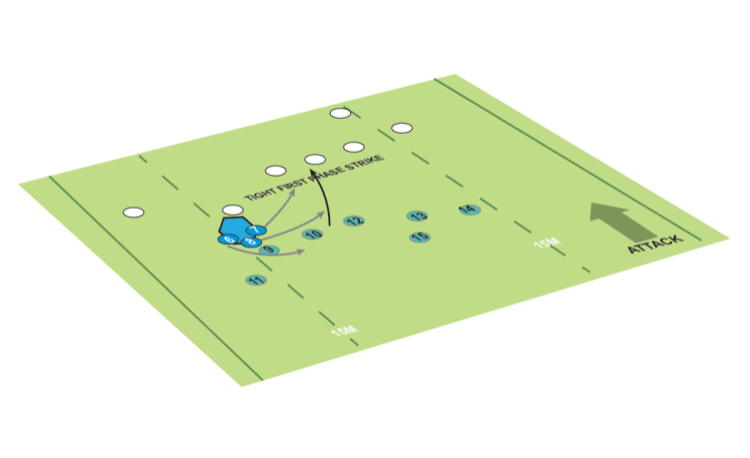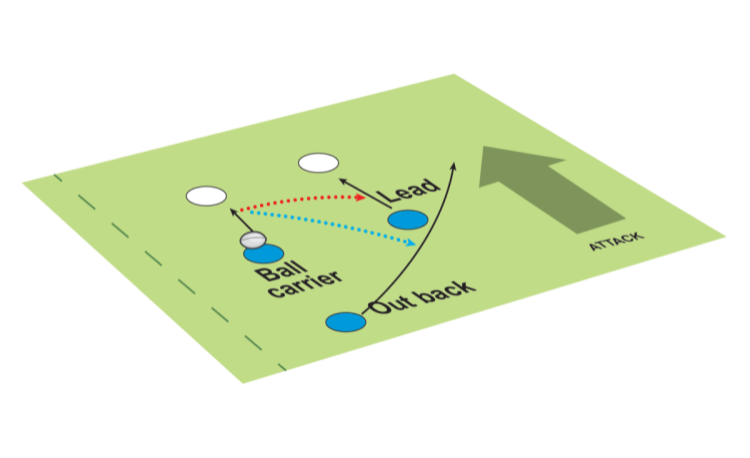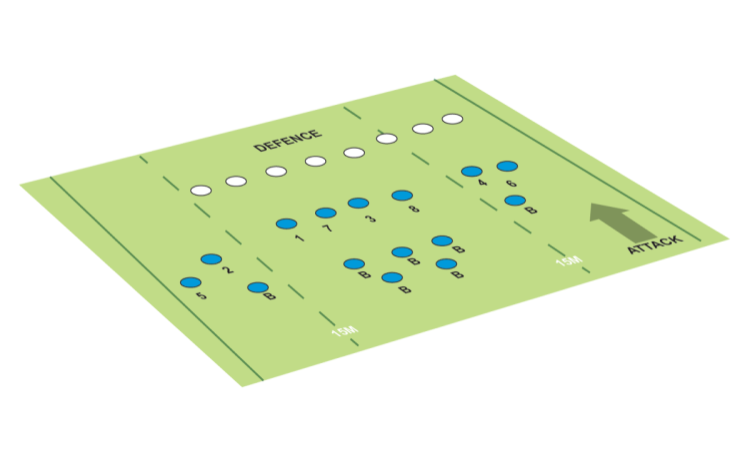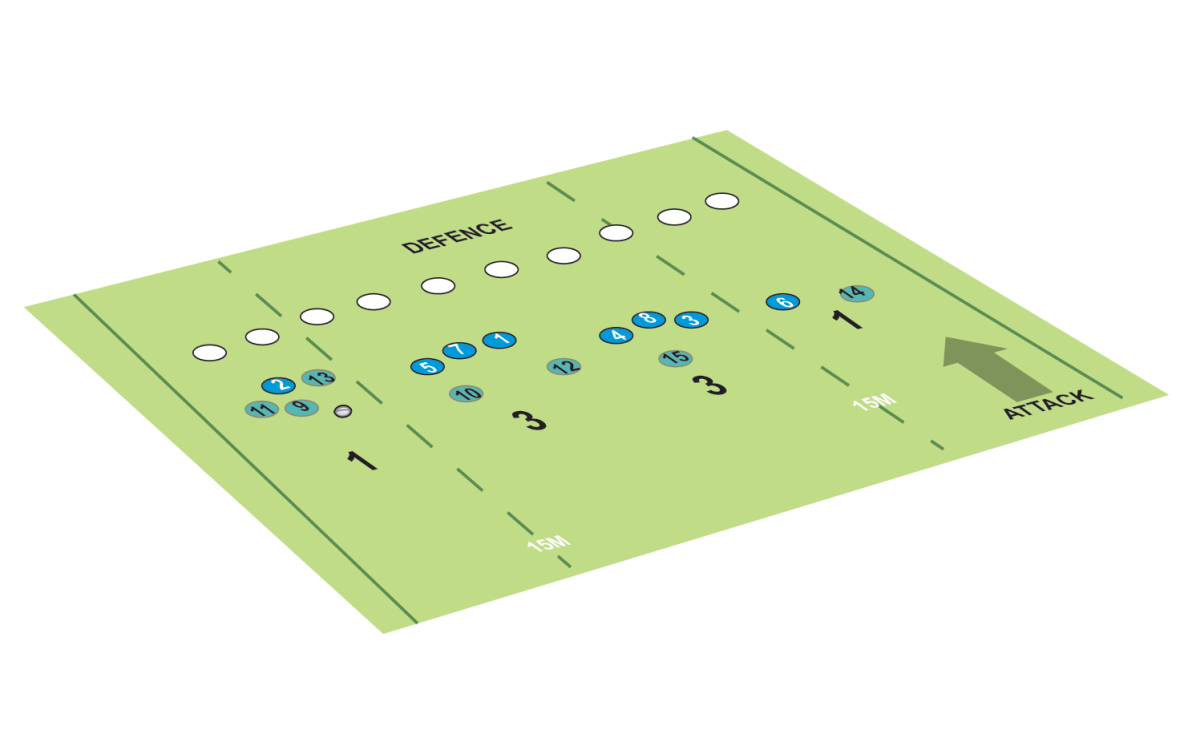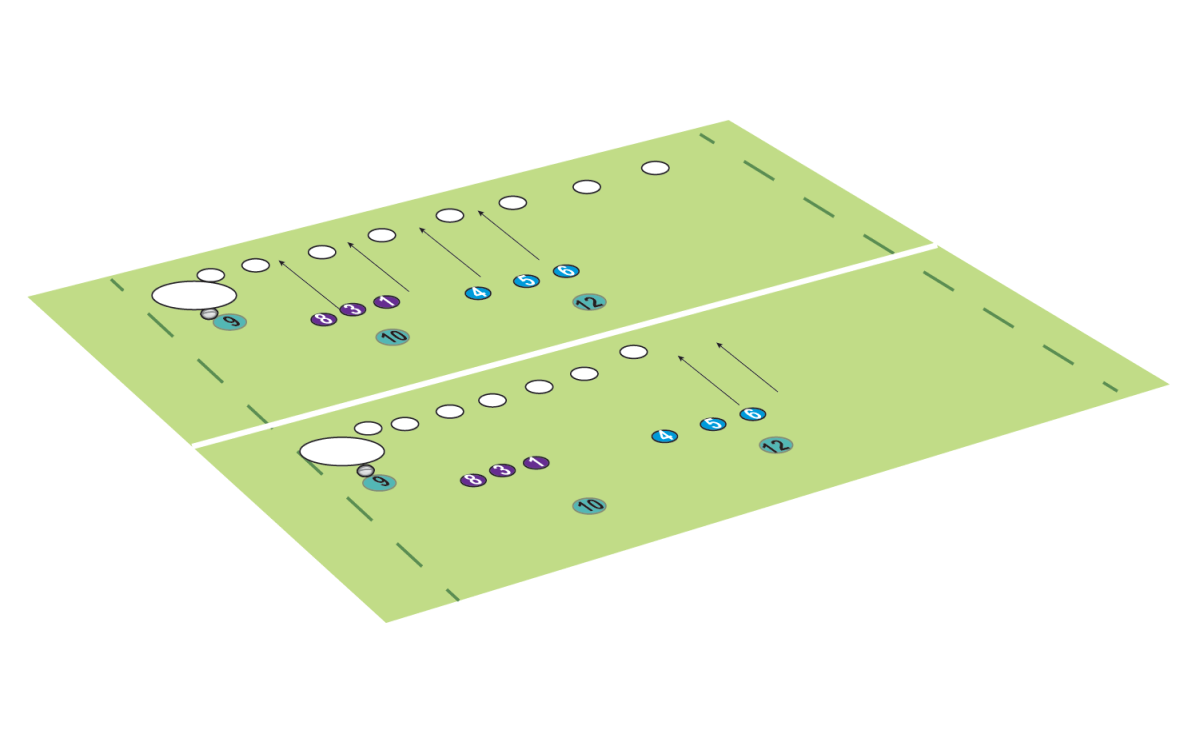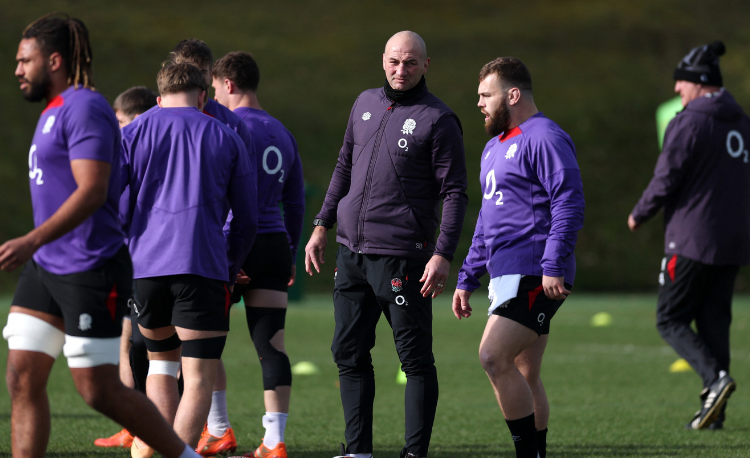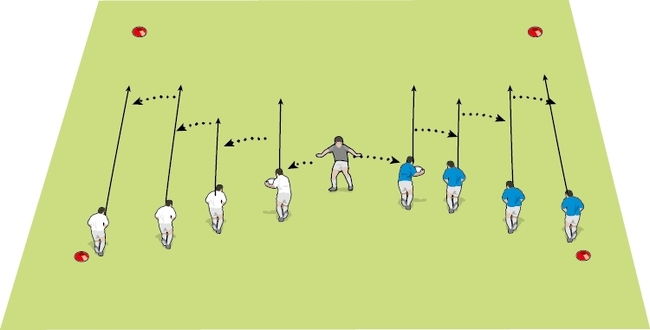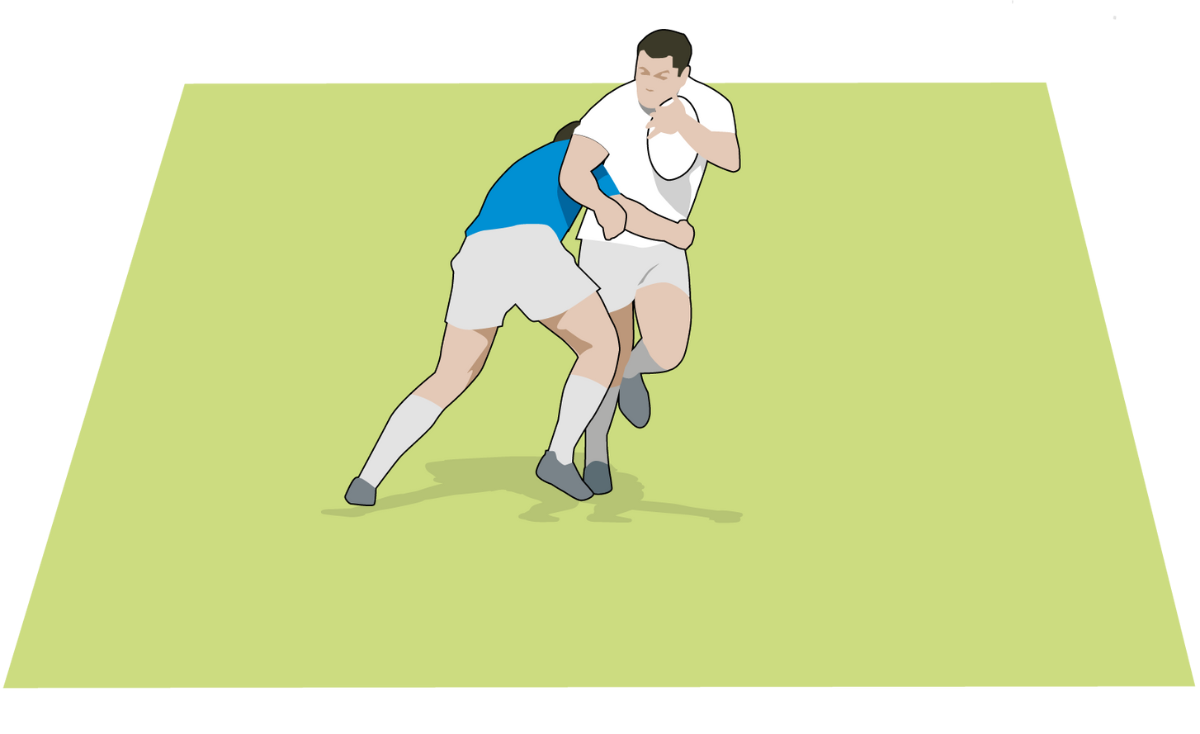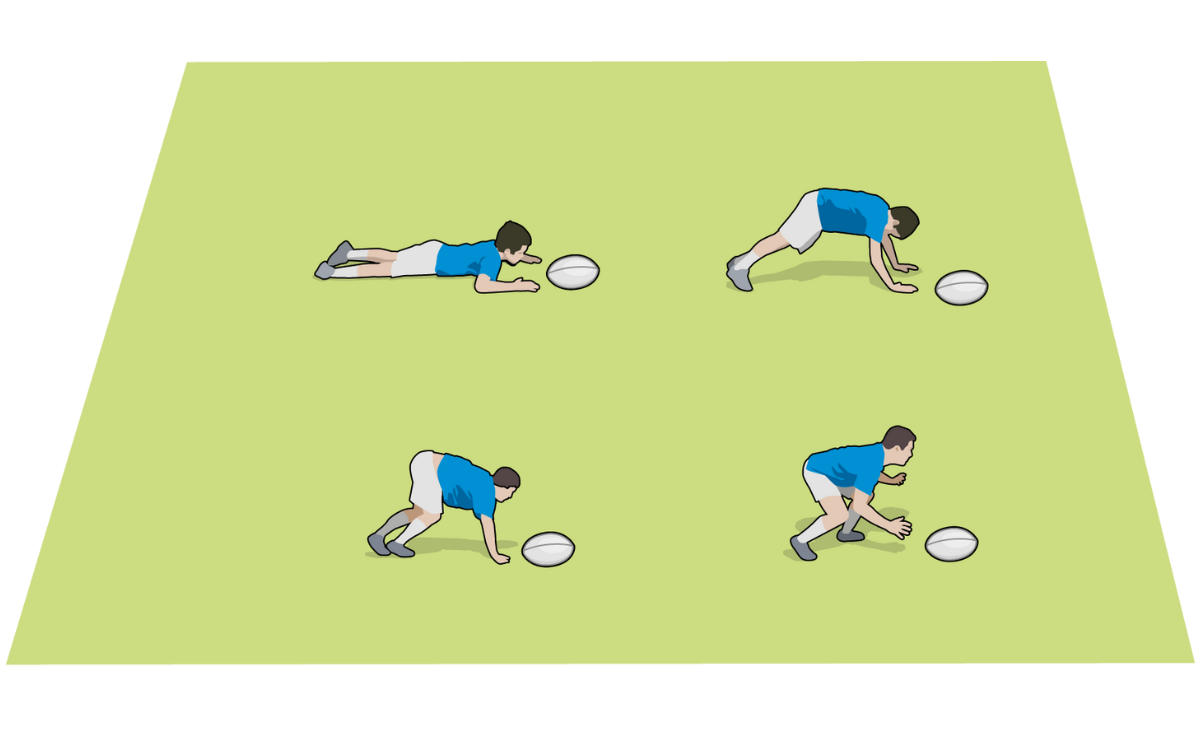Attacking framework - part 2: 1-3-3-1
RICHARD WHIFFIN on using whole-part-whole to coach a 1-3-3-1 framework.
Implementing a successful attacking framework takes time.
Practices need to be designed and structured correctly for the players to understand their positioning and improve their decision-making and accuracy within the framework.
Utilising the whole-part-whole coaching method provides a team with the opportunity to understand the whole framework and get lots of repetition on the critical aspects of the attack.
Start your training with players in a ’perfect’ 1-3-3-1 framework (see fig. 1, below) with a wide breakdown. That breakdown should comprise of a couple of outside backs and one forward.
Outside of the wide breakdown, position two pods of three forwards, each marshalled from behind by an inside back. Then, to the far edge, place the remaining two outside backs and one forward.
From this ‘perfect’ framework, challenge the attack to go through several phases, playing through the middle pods of three.
Players from the original wide breakdown need to ‘reload’ an attack on the short side of the breakdown (highlighted in fig. 2), providing the attack with the ability to play both sides of the ruck.
Going through several phases within this framework will build confidence within the team in their position from wide and middle breakdowns.
Once a general understanding of positioning has been built, it is essential to use practices that challenge the players’ decision-making within the framework.
Splitting the team into ’edge’ and ’middle’ players, and creating decision-making drills, will increase the recognition of pictures that players will see in their respective areas.
The edge drill
Use an edge drill (see fig. 3) to improve decision-making and accuracy.
Related Files
Create a breakdown and align four attackers, ensuring there is always one wide forward involved. For each repetition, change the number and positioning of the defence.
The attack needs to understand what success looks like, from a line break to creating 1v1 opportunities.
The focus is on all players understanding the defensive picture and the successful options that can be used from it.
The drill can be developed by changing the ball speed and starting point of the breakdown, making the attack constantly adjust its width and depth among its players.
The middle drill
Use a middle drill (see fig. 4) to challenge the players scanning for space and execution.
Set up an edge breakdown with two pods of three forwards to the open side. Each pod should have a ball-playing back who is marshalling it.
Control the defence to give the attack different pictures.
You can encourage a play-through attack focus, with the defenders being spaced wide apart, and a play-around attack focus with the defenders tightly bunched together and leaving space in the wide channel.
Challenge the backs to scan for the spaces and help the forwards with their decision-making.
You can also challenge the forwards’ skillset by altering the ball speed and their starting positions so as not to always be perfect.
Training the set up
Improving each aspect of the framework in an isolated scenario will improve the number of repetitions your players get.
This, in turn, will improve your team’s ability to see the defensive picture, adapt the options built into the framework and execute accordingly.
While bringing the whole 1-3-3-1 framework back together for 15v15 training will cement the learning, it is still important, at times, to condition the defence to give different defensive pictures, to check for players scanning and their understanding of both the pictures presented and the options to take from them.
You could expect to see players fall into this framework reasonably quickly across a couple of sessions with continual feedback on positioning and understanding.
The decision-making aspect of the attack will take more time, with players having to work on scanning and communicating the correct options from the defensive pictures.
Take time to ‘freeze frame’, or pause, training sessions, with players remaining in their current positions. Challenge players and ask them why they took the decisions they did.
Across a pre-season, you can embed your framework and have several efficient players making good decisions off the defence.
Newsletter Sign Up
Coaches Testimonials

Gerald Kearney, Downtown Las Vegas Soccer Club

Paul Butler, Florida, USA

Rick Shields, Springboro, USA

Tony Green, Pierrefonds Titans, Quebec, Canada
Subscribe Today
Be a more effective, more successful rugby coach
In a recent survey 89% of subscribers said Rugby Coach Weekly makes them more confident, 91% said Rugby Coach Weekly makes them a more effective coach and 93% said Rugby Coach Weekly makes them more inspired.
Get Weekly Inspiration
All the latest techniques and approaches
Rugby Coach Weekly offers proven and easy to use rugby drills, coaching sessions, practice plans, small-sided games, warm-ups, training tips and advice.
We've been at the cutting edge of rugby coaching since we launched in 2005, creating resources for the grassroots youth coach, following best practice from around the world and insights from the professional game.
